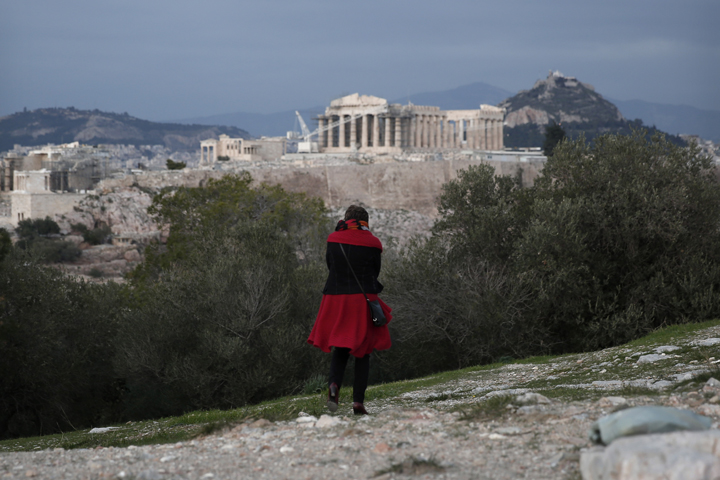Advertisement
Secrets Of The Parthenon Present A Gripping 'Enigma'
ResumeWe go back to the future with a new look at the Parthenon of Ancient Greece, Athens, and the foundations of democracy.

Picture the Parthenon – on the Acropolis, rising stunningly in white marble above Athens in Greece - and for centuries now people have seen the open, august architecture of democracy. The clean columns and potent symmetry of reason and an ideal of Western civilization. We’ve copied it all over in pillared post offices and public buildings, suggesting an ancient root and endorsement of American democracy. A deep, new reading of the splendor of the Parthenon says we may not fully understand what we’re embracing. This hour On Point: the full meaning of a powerful icon – the Parthenon.
-- Tom Ashbrook
Guests
Joan Breton Connelly, professor of classics and art history at New York University. Author of "The Parthenon Enigma: A New Understanding of the World's Most Iconic Buildling And The People Who Made It." Also author of "Portrait of a Priestess: Women and Ritual in Ancient Greece."
William St. Clair, senior research fellow at the Institute of English Studies at the School of Advanced Study, the University of London. Author of "Lord Elgin and the Marbles: The Controversial History of the Parthenon Sculptures."
From Tom's Reading List
American Journal of Archeology: The Parthenon Frieze -- "The traditional interpretation, identifying the frieze as the Panathenaic procession, goes back to the eighteenth century travelers Stuart & Revett. It has two main points of vulnerability. First, some items are missing which would be expected: e.g. kanephoroi (women carrying reed baskets), allies shown as tribute bearers, hoplites, the sacred trireme. Second, the violation of convention (having a contemporary scene where there should be a mythological one) would be severe and anomalous. Some scholars have met these objections by supposing that we have an "original" Panathenaia retrojected into mythic time."
Read An Excerpt of "The Parthenon Enigma" By Joan Breton Connelly
This program aired on January 2, 2014.